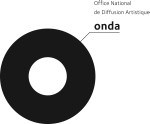 based on Franz Kafka’s novel
based on Franz Kafka’s novelin French, with Hungarian subtitles
POST-SHOW DISCUSSION
On 7 Nov after the performance.
Have you ever wondered what would happen if two of you could exist/live simultaneously? You and your android robot reproduction, who can talk and behave exactly as you. And not only in the mirror, but it would replace you anywhere anytime and live your life. Almost the same life…
One morning, Grégoire Samsa is awakened by a nightmare and realizes he has morphed into an android in the night. He talks to his family about it, but they think he is actually hiding somewhere and controlling the android. His family do not seem to understand, and they show him only irritation and disgust…
Immense figure of what is often referred to as “absurd” literature, prophet of a dehumanized 20th century, and “existentialist” before the term existed – but also a master of dark humour – Kafka examined the philosophical question of human existence and alterity in his masterpiece,
The Metamorphosis. The fundamentally original aspect of Oriza Hirata’s experimental staging is that one of the actors is an android, REPLIEE S1. The roles of other Samsa family characters are played buy famous French movie stars like cult cinemas’ diva Irène Jacob (Veronica Two Lives of Three Colors – Red), Jérôme Kircher and Laetitia Spigarelli (Clean, Paris, I Love You).
This is part of his Robot Theater Project, which has been in place for the past 5 years at Osaka University. The Metamorphosis will be the sixth production in this new genre of theatre. The premiere will be presented as part of the Automne en Normandie festival in 2014 and Trafó will be one of the first venues of the European tour.
For the Robot Theater Project’s other plays, he has always chosen themes that were directly linked to questions raised by the existence of robots and androids: life and death, the distinction between man and android and the relationship to work. One might say that Robot Theatre is just a new form of puppetry, since robots are machines and are familiar to us.
Sartre wondered how one could distinguish a person from a marionette. This philosophical problem is now more topical than ever in the android era. If one supposes, along with Sartre, that our freedom is in constant friction with everyone else’s, humans will inevitably feel threatened by the evolution of androids, because the freer androids are, the more precarious human freedom will be.
///////////////////////////////////////////////////////////////////////////////////////////////
The Robot Theater Project was founded 5 years ago at Osaka University with the goal of displaying robot prototypes in a creative theatrical context. The expositions in which scientists participate in order to technologically compete with one another; do not solicit an emotional response from the public, even if they often are in admiration. Touching people emotionally with robots will offer a lot of fundamental research towards a future coexistence with robots, where one would not feel uncomfortable or anxious in their presence.
http://www.seinendan.org/eng
///////////////////////////////////////////////////////////////////////////////////////////////
Oriza Hirata is one of the most influential and awarded figures in contemporary Japanese theatre, working regularly with international artists in France, Korea, Australia, the U.S.A., Ireland and Canada. He’s a playwright, director, leader of Seinendan Company, and artistic director of Komaba Agora Theater. He used to be artistic director of several festivals and currently he is professor at the Osaka University Center of the Study of Communication-Design, general manager of the Fujimi Culture Hall KIRARI FUJIMI.
While in college Hirata founded Seinendan Theater Company to pursue and practice his "contemporary colloquial theater theory." They are active in education and their workshop method was included in one of the official national Japanese textbooks for junior high school. More than
300 000 students a year are now creating drama in the classroom.
“I do not find that men and robots are all that different in essence. Robots are built in order to work, and their functions are very precisely modeled on human functions – so much so that nothing in their essence allows one to distinguish their functions from those of humans.” Oriza Hirata
///////////////////////////////////////////////////////////////////////////////////////////////
Hiroshi Ishiguro is engineer and world specialist in robotics at Osaka University, where he teaches as a head of a research group. His research includes systems of sensor distribution, interactive robotics and android sciences. He is a four-time winner of the RoboCup Prize for Best Humanoid Robot, as well as having been awarded the Osaka Culture Prize, and the Rinzaburo Shida Award, given by the Ministry of Internal Affairs and Communication. He has published over 300 articles and conferences in major newspapers, and has developed several androids.
“If you are able to give me a definition of human, I will happily design a robot matching that definition.” Hiroshi Ishiguro
///////////////////////////////////////////////////////////////////////////////////////////////
Adaptation and direction: Oriza HIRATA, based on Franz KAFKA’s novel
Translation: Mathieu CAPEL assisted by Hirotoshi OGASHIWA
Development of androids: Hiroshi ISHIGURO
Set designer: Itaru SUGIYAMA
Sound designer: Yuta SENDA
Light designer: Aya NISHIMOTO
Costume designer: Karl André THYRIOT
Robot director: Takenobu CHIKARAISHI (Osaka University Hiroshi Ishiguro Laboratory / Osaka University Center for the Study of Communication Design)
Translation: Mathieu CAPEL assisted by Hirotoshi OGASHIWA
CAST
Grégoire Samsa: REPLIEE S1 (an android)
The sister, Greta: Laetitia SPIGARELLI
The mother: Irène JACOB
The father: Jérôme KIRCHER
The tenant: Thierry VU HUU
The voice and motion of the android: Thierry VU HUU
Stage manager: Aiko HARIMA
Interpreter: Mariko HARA
Sound and light operator: subtitle Aya NISHIMOTO
Producer: Yoko NISHIYAMA
Tour manager: Chihiro OGURA
The poem quoted during the show is extracted from a poem of Kenji MIYAZAWA titled Gattenshi.
Production: Agora Planning.,ltd. Seinendan Theater Company / the University of Osaka / ATR Hiroshi Ishiguro Laboratory // Executive Production: Festival Automne en Normandie // Co-production: Taipei Arts Festival / Centre Dramatique National de Haute-Normandie / Le TAP - Scène Nationale de Poitiers / Espace Jean Legendre, Compiègne – Scène Nationale de l’Oise en préfiguration //
Co-organisation: Kinosaki International Arts Center, KAAT (Kanagawa Arts Theater) // with the support of the Agency for Cultural Affair of Japan / Japan Foundation / ONDA – Office National de Diffusion Artistique / the French Institute of Japan
Hungarian subtitles: Zsófia MOLNÁR





















